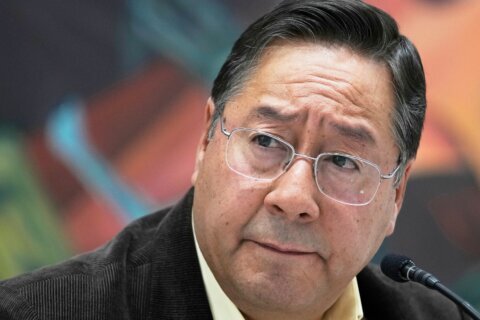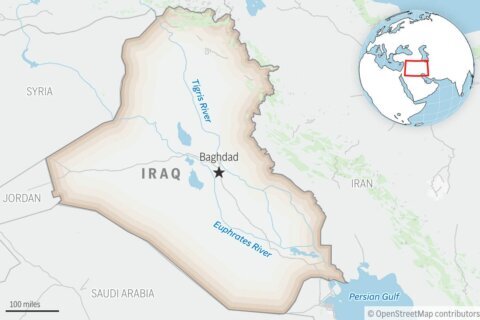WASHINGTON — Companies that provide cellphone service are gearing up for the crowds of hundreds of thousands of people that will gather on the National Mall next week for Donald Trump’s inauguration.
Cell companies around D.C. say they’ve been preparing for the event for the past few years and are prepping a number of high-tech efforts to keep Inauguration Day smartphones fully functioning, including roving temporary cell towers.
AT&T will be utilizing seven such mobile towers — the company calls them “Cell on Wheels” — during the inauguration.
“Basically, when we go into areas where there are going to be a lot of users, we can bring these into it to provide a lot of additional capacity,” said Brian Harrison, technical communications manager for AT&T. “You’ll see these … from the Capitol, all the way down to the Lincoln Memorial.”
The company says it has boosted its capacity in the D.C. region by 400 percent ahead of the inauguration, and spent $15 million over the past couple of years preparing and installing new technology — some temporary, some permanent. He added that the company will start planning for the next inauguration a couple of weeks after this one.
“We’ve done a lot of network upgrades to all the sites that surround the National Mall, as well as the parade route,” Harrison said. “A lot of those have basically received the maximum amount of capacity that we can put in a cell site.”
Companies pledge new tech to handle massive data downloads
Verizon also has been working on its network in preparation for Jan. 20, upgrading cell sites around the Mall and surrounding areas. The company says it has increased its capacity 500 percent and will be using new technology at temporary cell sites that allow it to make real-time adjustments, moving wireless capacity with the crowds as they move.
“We’ve been preparing our network in the D.C. area for months to be ready for this historic event,” said Nicola Palmer, chief network officer for Verizon Wireless.
Verizon is using what’s known as “Matsing Ball” technology, which allows company engineers to split up a large crowd of cellphone users into specific slices that can be specifically adjusted based on data usage.
Sprint has spent the past year building addition network coverage and capacity, Mark Walker, regional vice president for the company, said in a company blog post.
Walker said the company is using a technique called carrier aggregation to allow more data traffic to travel across its networks at faster speeds and is also bringing in Cells-on-Wheels to provide additional capacity
T-Mobile has promised to boost capacity by 10 times with new and enhanced sites and the addition of the mobile, temporary cell towers, according to a tweet from the company’s chief technology officer Neville Ray.
Tips for users
Part of the reason the cell companies have upped their capabilities is because many more people attending the inauguration will be carrying smartphones and they expect to be able to use them.
During the last two inaugurations, there were problems with cell service as people packed the National Mall and the sheer number of people overwhelmed the cellphone networks.
For President Barack Obama’s first inauguration, in 2009, only 10 percent of the U.S. population used a smartphone. This time around, for Trump’s inauguration, 88 percent of Americans own smartphones, Verizon said.
You might still encounter problems on Inauguration Day itself. Inauguration planners say coverage “may be spotty” given high demand.
If you just have a simple message — “Where are you?” for example — texting is probably the best option: It takes up the least bandwidth, said Harrison, the AT&T technical manager.
Make sure your cellphone is fully charged and consider using an external battery to keep it charged throughout the day.
WTOP’s Jack Moore contributed to this report.







